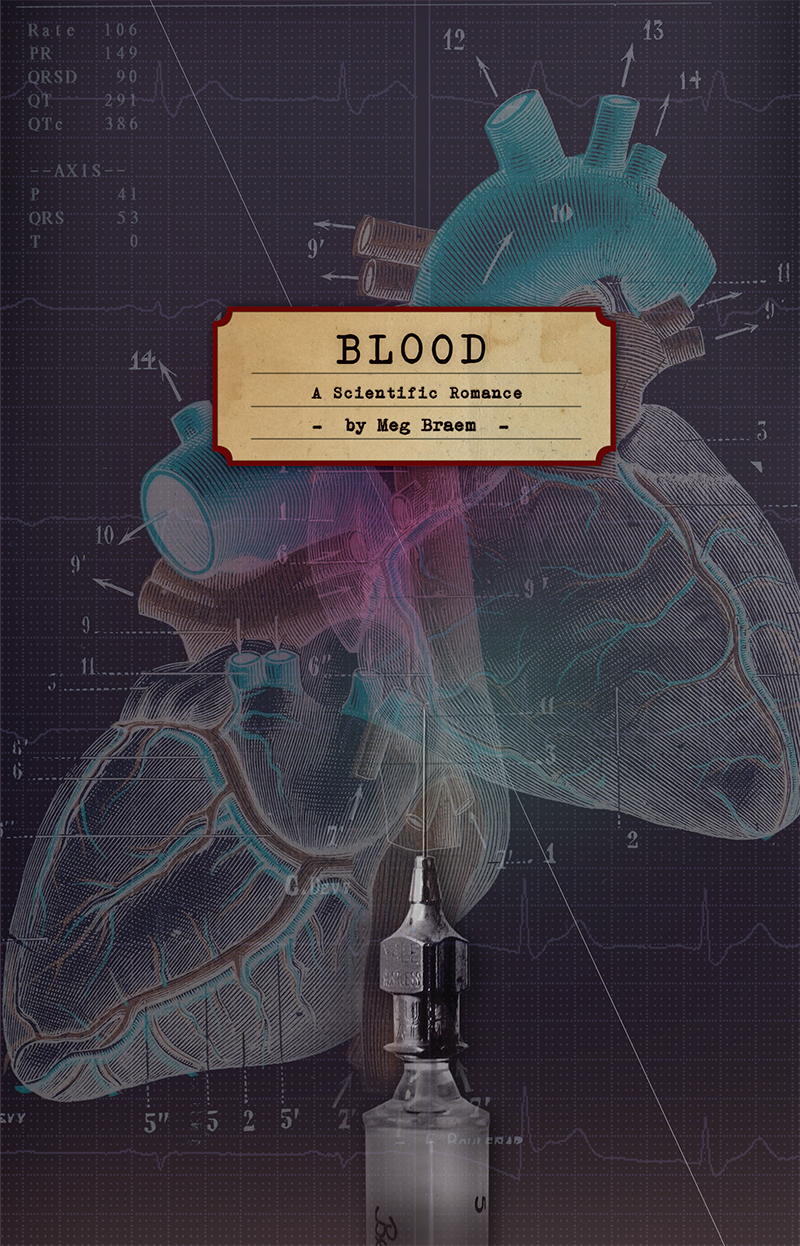 Blood: A Scientific Romance Copyright 2013 by Meg Braem Playwrights Canada Press 202-269 Richmond Street West, Toronto, ON, Canada M5V 1X1 phone 416.703.0013 No part of this book may be reproduced, downloaded, or used in any form or by any means without the prior written permission of the publisher, except for excerpts in a review or by a licence from Access Copyright, www.accesscopyright.ca. For professional or amateur production rights, please contact the publisher Cover design by Elliott C. Smith Book design by Blake Sproule The Alegreya serif typeface used was designed by Juan Pablo del Peral. The typefaces is used under the SIL Open font license version 1.1. Library and Archives Canada Cataloguing in Publication Braem, Meg, author Blood : a scientific romance [electronic resource] / Meg Braem. A play.
Blood: A Scientific Romance Copyright 2013 by Meg Braem Playwrights Canada Press 202-269 Richmond Street West, Toronto, ON, Canada M5V 1X1 phone 416.703.0013 No part of this book may be reproduced, downloaded, or used in any form or by any means without the prior written permission of the publisher, except for excerpts in a review or by a licence from Access Copyright, www.accesscopyright.ca. For professional or amateur production rights, please contact the publisher Cover design by Elliott C. Smith Book design by Blake Sproule The Alegreya serif typeface used was designed by Juan Pablo del Peral. The typefaces is used under the SIL Open font license version 1.1. Library and Archives Canada Cataloguing in Publication Braem, Meg, author Blood : a scientific romance [electronic resource] / Meg Braem. A play.
Electronic monograph in multiple formats. Issued also in print format. ISBN 978-1-77091-172-7 (pdf).--ISBN 978-1-77091-173-4 (epub) I. Title PS8603.R333B56 2013 C812'.6 C2013-904400-0
We acknowledge the financial support of the Canada Council for the Arts, the Ontario Arts Council (OAC)an agency of the Government of Ontario, which last year funded 1,681 individual artists and 1,125 organizations in 216 communities across Ontario for a total of $52.8 millionthe Ontario Media Development Corporation, and the Government of Canada through the Canada Book Fund for our publishing activities. FOREWORD Blood: A Scientific Romance is many things. It's a play about alternate realities, it's an oblique critique of the ethics behind scientific investigation of human subjects, it's a romance, a tragedy, a prairie gothic, a thoughtful meditation on what it is to be twin.
Like many plays today it straddles genres, integrates a variety of conventions, and ultimately defies definition. One of the things that I admire most about Meg Braem as a playwright is the diverse nature of her interests. She is keenly aware of social and environmental issues, she keeps bees, is passionate about clowning and ancient Greek theatre. In Blood , one sees all these topics and interests mixing and mingling to good effect. There is a lovely choral quality that echoes the ancient Greek form in a good way. One sees the scrutiny and suspicious circling (as bees circle, I think) of scientific procedure.
There is a subtle influence of a clown aesthetic in the use of a comic metanarrative and the playful poetry. In other, less capable hands this all might prove too much, but Meg employs a light touch and a certain nimbleness as she keeps all her pieces and components in play. For all the literary gymnastics, make no mistake, however, there are issues of consequence being explored in this play. Dr. Glass saves two young orphaned girls from a tragic accident and then has them transported to his private lab, where he imprisons them, raises, and studies them. This fictional exploitation of human subjects is grounded in a very real, troubled history that the scientific community continues to grapple with.
Perhaps the most notorious examples of non-consensual experimentation upon human subjects are those performed by the Nazis during the Second World War. But one doesn't have to look that far afield, or search into the distant past to find other examples. In the late forties, scientists working for the American government had prisoners in Guatemala infected with syphilis to determine the effectiveness of penicillin. In Montreal, in the late fifties and early sixties, psychiatric patients were subjected to "psychic driving" experiments partially funded by the CIA. Blood attempts to isolate and understand the impulse that motivates this kind of misguided research. Preventing the play from ever becoming didactic or preachy, however, is the obvious empathy that Meg has for her characters.
She cares deeply about the relationships her characters engage in and strive to negotiate, whether those relationships are supportive, antagonistic, competitive, or all three simultaneously. (Did I mention that Meg is also a twin? I can recall speaking with her when she was first thinking about this play, about the complex nature of being a twin. She recalled the special sensitivity and closeness that comes with having someone as a playmate right from your first moments in the womb. She also spoke of the somewhat claustrophobic feeling of growing up alongside someone you know you will be compared to for your entire life. Some of that complexity is embedded in this play as well.) This, perhaps, is a signature of Meg Braem's workthe passionate engagement she has with her characters. In her plays nobody ever remains neutral.
People struggle to remain objective, battle to remain in control, but ultimately it is their passions that drive them. Inasmuch as Blood: A Scientific Romance is a work with many facets, it is equally a work that generates many responses. It is comic in places, provocative in other places, but it is thoroughly compelling throughout. This is a fascinating early work by a playwright who I am certain we will be hearing more from in the future. It's with great eagerness that I look forward to her next work. Clem Martini June 2013 For my twin sister, Jennifer Blood: A Scientific Romance premiered at the Pumphouse Theatre in Calgary on September 30, 2010, produced by Sage Theatre, with the following cast and crew: Poubelle: Nicola Elson Angelique: Ellen Close Dr.
Glass: Christopher Youngren Max: Tyrell Crews Director: Valerie Planche Stage manager: Rachel Parris Apprentice stage manager: Michelle Kennedy Assistant director: Dylan Metcalfe Set, properties, and lighting designer: Cimmeron Meyer Costume designer: Julia Wasilewski Costume assistant: Anastasia Vogl Composer and sound designer: Andrew Blizzard Production manager: Carla Ritchie Technical directors: Ajay Bondoni and David Smith Production assistant: Marcia Liber Set construction: Jed Tomlinson CHARACTERS Poubelle: Fraternal twin to Angelique. Seventeen years old. Angelique: Fraternal twin to Poubelle. Seventeen years old. Dr. Glass: Sixty-five-year-old scientist/doctor.
He has been worn and damaged by his life. Dr. Max Street: Twenty-seven years old. A recent graduate from medical school. Maman and Papa: These voices are heard and may be pre-recorded. SETTING A farmhouse on the Canadian prairie, 1962.
A NOTE ABOUT STAGING Blood is meant to be performed without blackouts; scenes should flow effortlessly from one to the next. Directors and designers are encouraged to approach the physical production of the play with imagination and a certain abstract sensibility. Scene 1 ANGELIQUE and POUBELLE walk on stage and sit down in two chairs set side by side. The chairs represent the car at times throughout the scene. We hear MAMAN and PAPA 's voices throughout. POUBELLE The rhyming couplets, ANGELIQUE Our lovely set of twins, BOTH God knows where one ends and the other begins.
ANGELIQUE A double of everything sweet to pleasure the eye, BOTH Of breath, They inhale together. ANGELIQUE Of breath and of softness of thigh. The girls are in the back seat of the family station wagon. POUBELLE Maman, Angelique is pulling my hair! ANGELIQUE Non, Maman, Poubelle a commenc. POUBELLE Non! Papa, est-ce que vous pouvez dire Angelique d'arrter! PAPA Arrtez, les filles! Why don't you look outside your windows? Garde le beautiful, big sky. Garde a instead of ripping each other apart back there.
POUBELLE Papa, where are we? It's so terribly flat. PAPA The prairies, ma chre. POUBELLE Flat like a pancake. Pancake land. ANGELIQUE Flapjack land! POUBELLE You're a flapjack. ANGELIQUE You're going to marry a flapjack! POUBELLE Well, at least I'm getting married.
Next page

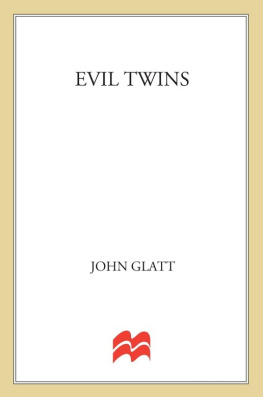
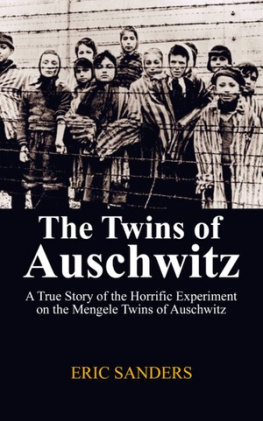


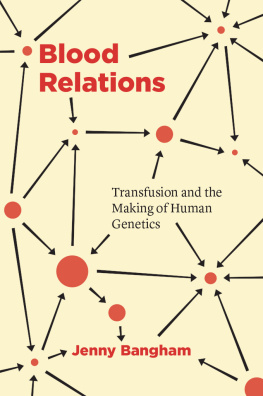
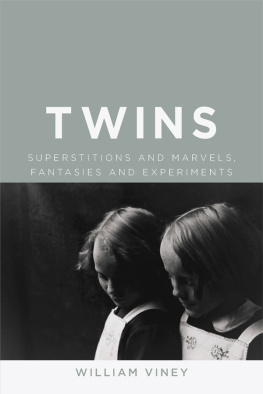
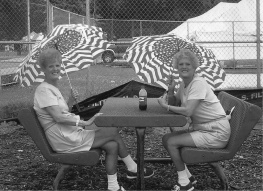

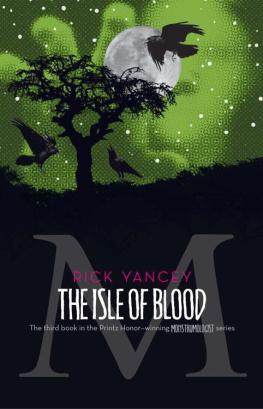
 Blood: A Scientific Romance Copyright 2013 by Meg Braem Playwrights Canada Press 202-269 Richmond Street West, Toronto, ON, Canada M5V 1X1 phone 416.703.0013 No part of this book may be reproduced, downloaded, or used in any form or by any means without the prior written permission of the publisher, except for excerpts in a review or by a licence from Access Copyright, www.accesscopyright.ca. For professional or amateur production rights, please contact the publisher Cover design by Elliott C. Smith Book design by Blake Sproule The Alegreya serif typeface used was designed by Juan Pablo del Peral. The typefaces is used under the SIL Open font license version 1.1. Library and Archives Canada Cataloguing in Publication Braem, Meg, author Blood : a scientific romance [electronic resource] / Meg Braem. A play.
Blood: A Scientific Romance Copyright 2013 by Meg Braem Playwrights Canada Press 202-269 Richmond Street West, Toronto, ON, Canada M5V 1X1 phone 416.703.0013 No part of this book may be reproduced, downloaded, or used in any form or by any means without the prior written permission of the publisher, except for excerpts in a review or by a licence from Access Copyright, www.accesscopyright.ca. For professional or amateur production rights, please contact the publisher Cover design by Elliott C. Smith Book design by Blake Sproule The Alegreya serif typeface used was designed by Juan Pablo del Peral. The typefaces is used under the SIL Open font license version 1.1. Library and Archives Canada Cataloguing in Publication Braem, Meg, author Blood : a scientific romance [electronic resource] / Meg Braem. A play.